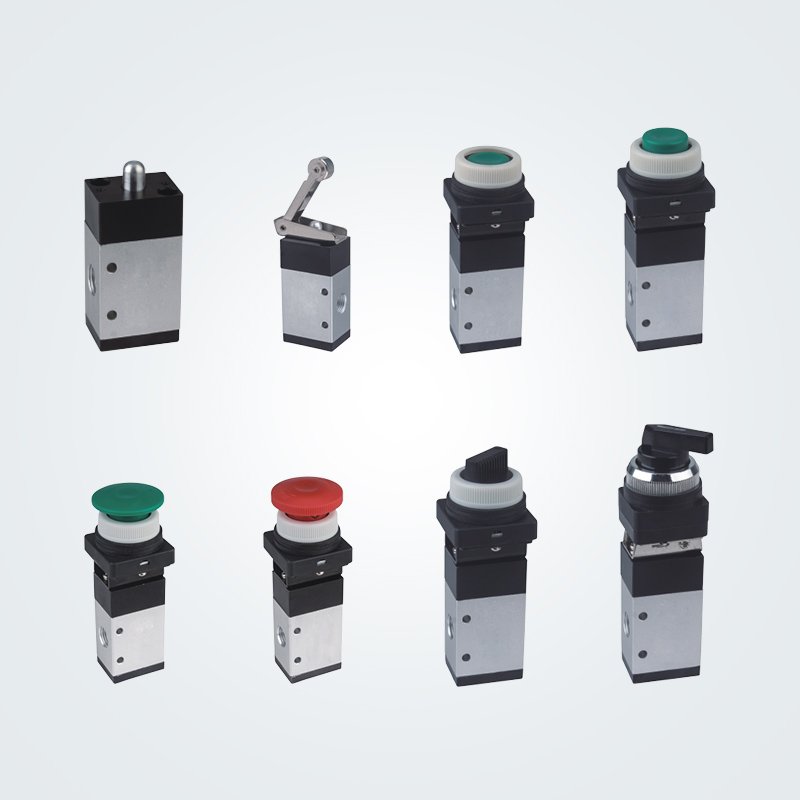What is a Air Flow Control Valve?
Air flow control valves might seem like a small part of your system, but they do a lot of heavy lifting. It controls how much air flows through a pneumatic system. This helps regulate how fast something moves—like a cylinder extending or retracting.
You’ll find these valves working everywhere from packaging machines and assembly line robots to HVAC systems and even precision medical equipment.
By dialing in the airflow, you make sure everything runs smoothly, safely, and without jerky motions that could cause wear—or worse, break something.

How Air Flow Control Valves Actually Function?
Think of an air flow valve like a faucet. It works just like a water faucet – open it wider for more airflow, close it down to restrict the flow.
There are two main ways to control the flow:
1. Meter-In: Limits the air entering the actuator. Ideal when the external load is light or constant.
2. Meter-Out: Controls air leaving the actuator. Preferred in high-resistance or varying-load applications where you want better speed control and stability.
Types of Air Flow Control Valves?
1. In-line valves: These go right in the tubing and are great when you don’t have a lot of space.
2. Elbow or angle valves: Perfect when your tubing has to turn a corner.
3. Needle valves: Let you make fine manual adjustments, like in a lab or test setup.
4. One-way flow control valves: These combine a check valve with throttling to control flow in one direction while allowing full-speed flow in the opposite.
How to Choose the Right Air Flow Control Valve?
Choosing the right valve isn’t rocket science, but you do want to get it right.
Here’s what to look at:
- Port size: Usually 1/8″, 1/4″, 3/8″, etc.—match it to your tubing.
- Flow rate: Measured in SCFM or L/min. Make sure it’s enough for your actuator.
- Pressure range: Most valves handle 0.5–10 bar, but double-check.
- Material: Brass is common, stainless is for harsher environments, plastic is lightweight.
- Thread type: NPT, G, BSPT—match your region and fittings.
Applications in Pneumatic Circuits
You’ll find these valves doing important work in all kinds of machines.
Here are a few examples:
- Packaging lines: Smoothly push boxes onto conveyors without damaging them.
- Robot arms: Control the movement speed so they don’t overshoot.
- Automatic doors: Slow down the door when it closes for safety, but open fast when needed.
Case Study–Conveyor Stopper Arm
In a warehouse conveyor system, there’s a little pneumatic arm that pops up to stop boxes. When it pulls back too fast, the sudden shock sends vibrations through everything. By adding a flow control valve, the motion becomes controlled and smooth—helping the whole line stay accurate and extending the life of the hardware. Air flow control valves help your machines run better. They make movement smoother, prevent damage, and keep everything more predictable.
Trends and Innovations
Flow control valves are getting smarter – just like the rest of your factory. Here’s what’s new in modern valve technology:
- Remote digital control—Now you can adjust valve settings directly from your PLC or HMI screen without touching the physical valve.
- IO-Link communication—These smart valves actually talk to other components in your system, providing real-time diagnostics and performance data.
- Self-monitoring capabilities—The latest valves can detect abnormal flow patterns and immediately alert you about potential clogs or leaks before they cause downtime.
That’s not just high-tech flash. It’s a real upgrade with measurable ROI.

